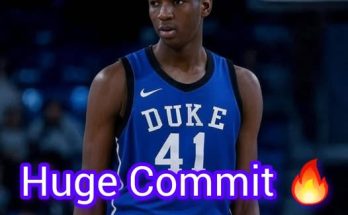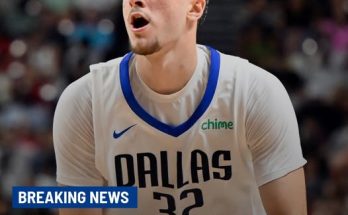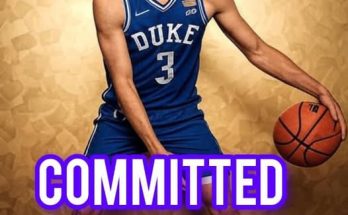The Dallas Cowboys have never been shy about making aggressive moves to bolster their offense, and during the 2025 offseason, the front office showed once again how determined they were to add talent to the wide receiver room. While much of the attention was centered on their eventual acquisition of George Pickens from the Pittsburgh Steelers in a post-draft trade, a new report suggests the Cowboys also explored other avenues — including an inquiry into Baltimore Ravens wide receiver Rashod Bateman.
According to multiple league sources with direct knowledge of the situation, the Cowboys made exploratory calls to the Ravens regarding Bateman during their pursuit of a wide receiver upgrade. The discussions, however, never progressed beyond the initial stages. Ultimately, Dallas turned its attention to Pittsburgh, finalizing a deal to land Pickens shortly after the conclusion of the 2025 NFL Draft.
The revelation adds a fascinating layer to the Cowboys’ offseason strategy and sheds light on the urgency within the organization to provide quarterback Dak Prescott with more consistent weapons on the outside. Coming off a season where CeeDee Lamb put up All-Pro numbers but received little support from the rest of the receiving corps, the Cowboys entered the offseason determined to change that dynamic. Michael Gallup was released, Brandin Cooks remains solid but aging, and younger options like Jalen Tolbert haven’t developed as hoped. That left Dallas looking externally for a potential WR2 — or even someone who could eventually challenge Lamb for top billing.
Rashod Bateman, a former first-round pick out of Minnesota, has had a frustrating career so far due to injuries and inconsistent quarterback play, but his talent is still widely respected around the league. In 2024, he appeared in all 17 games for the first time in his NFL career, finishing with 42 catches for 502 yards and 4 touchdowns in a crowded Ravens offense that emphasized tight end play and a ground attack led by Lamar Jackson. While those numbers don’t leap off the page, Bateman’s route-running and ability to separate against man coverage have made him a valued asset in Baltimore — one the Ravens weren’t eager to part with.
When the Cowboys came calling, Baltimore reportedly made it clear they weren’t actively shopping Bateman. The conversations were brief, with no offer ever materializing. From Baltimore’s perspective, Bateman remains a key piece of their wide receiver group alongside Zay Flowers and Nelson Agholor. He also offers valuable insurance should Flowers suffer a setback or the team decide to ease the load on Mark Andrews in the passing game.
On Dallas’s end, the Cowboys were evaluating multiple wide receiver targets, and Bateman was just one of several names they considered. The front office, led by executive vice president Stephen Jones and overseen by owner Jerry Jones, continued to assess trade candidates both before and after the draft. After evaluating their draft haul and reviewing which veterans might be available on the market, Dallas reengaged the Steelers and worked out a deal to acquire George Pickens — a player who, at just 24 years old, has already shown flashes of stardom.
The Cowboys’ acquisition of Pickens marked one of the most significant post-draft moves of the offseason and sent a clear message about the team’s intent to contend immediately in the NFC. Pickens is coming off a 2024 campaign in which he caught 63 passes for 1,140 yards and 7 touchdowns. His combination of size, speed, and physicality makes him a natural fit in the Cowboys’ vertical passing game. Unlike Bateman, Pickens has avoided serious injuries so far and is regarded by some talent evaluators as having No. 1 receiver potential.
By securing Pickens, Dallas not only addressed a pressing need but did so without parting with any first-round draft capital. The trade, which involved a package of Day 2 picks and a conditional 2026 selection, was seen by many league observers as a win-win. The Steelers, who had recently selected a wide receiver early in the 2025 draft, were open to reshuffling their receiving room and stockpiling picks. Dallas, on the other hand, added a proven weapon without the long-term injury concerns that may have made a Bateman deal riskier.
Still, the Cowboys’ initial interest in Bateman is telling. It suggests they were exploring multiple stylistic fits for their offense, and that the coaching staff, including offensive coordinator Brian Schottenheimer, was open to a variety of receiver archetypes. Bateman is more of a possession receiver and polished route-runner, while Pickens thrives as a boundary threat with explosive big-play potential. Both would have addressed the team’s issues in different ways, but the Cowboys ultimately landed on the option they felt had the highest ceiling.
The situation also highlights the evolving dynamics between general managers across the league. While intra-conference trades — and especially deals between playoff contenders — used to be rare, the modern NFL has embraced player movement at an unprecedented level. The fact that Dallas even reached out to Baltimore, a perennial AFC contender, illustrates how the Cowboys’ front office is casting a wide net in its roster construction efforts.
For Cowboys fans, the thought of Bateman in a Dallas uniform might stir some “what if” conversations, but most are understandably thrilled with how things turned out. Pickens gives Prescott a legitimate downfield target, one who can draw coverage away from Lamb and create mismatches against secondaries that double-team the Cowboys’ top option. And with head coach Mike McCarthy under pressure to deliver results in what could be a pivotal year for his future in Dallas, adding firepower was seen as a must.
As for Bateman, he remains focused on elevating his role in Baltimore’s offense. Now entering his fourth year in the league, the former Big Ten standout is hoping to build chemistry with Jackson and stay healthy for a second consecutive season. The Ravens believe a breakout year could be on the horizon, especially with defensive attention shifting toward Flowers and Andrews. While he may not be in Dallas, Bateman is still in a position to make a major impact — and the Cowboys’ interest in him only reinforces that belief.
It’s worth noting that the Cowboys weren’t alone in showing interest in Bateman. League insiders say at least three teams made inquiries this offseason, but the Ravens have continued to rebuff trade interest unless they’re overwhelmed by an offer. That could change closer to the trade deadline depending on Baltimore’s performance, but for now, Bateman remains part of their plans.
Looking ahead, the Cowboys will spend training camp and preseason working Pickens into their offensive system. Early reports out of The Star in Frisco suggest he’s already impressing coaches with his athleticism and attitude. His arrival gives the Cowboys one of the more formidable receiver tandems in the league and positions them to challenge the Philadelphia Eagles and San Francisco 49ers in what promises to be a wide-open NFC race.
For Dallas, the goal is clear: make a deep postseason run, potentially return to the NFC Championship for the first time since the 1995 season, and finally capitalize on the talent-rich roster they’ve spent years assembling. Whether Bateman would have moved the needle in the same way is a question that will never be fully answered, but the Cowboys’ pursuit of him offers a rare glimpse into how thoroughly the organization is working to optimize every part of the roster.
In the end, Dallas did what great organizations do: they explored every option, stayed patient, and made a move that could define their season. And while Rashod Bateman remains in purple and black, the mere fact that Dallas reached out shows they’re willing to think outside the box — and leave no stone unturned in the pursuit of a Super Bowl.



